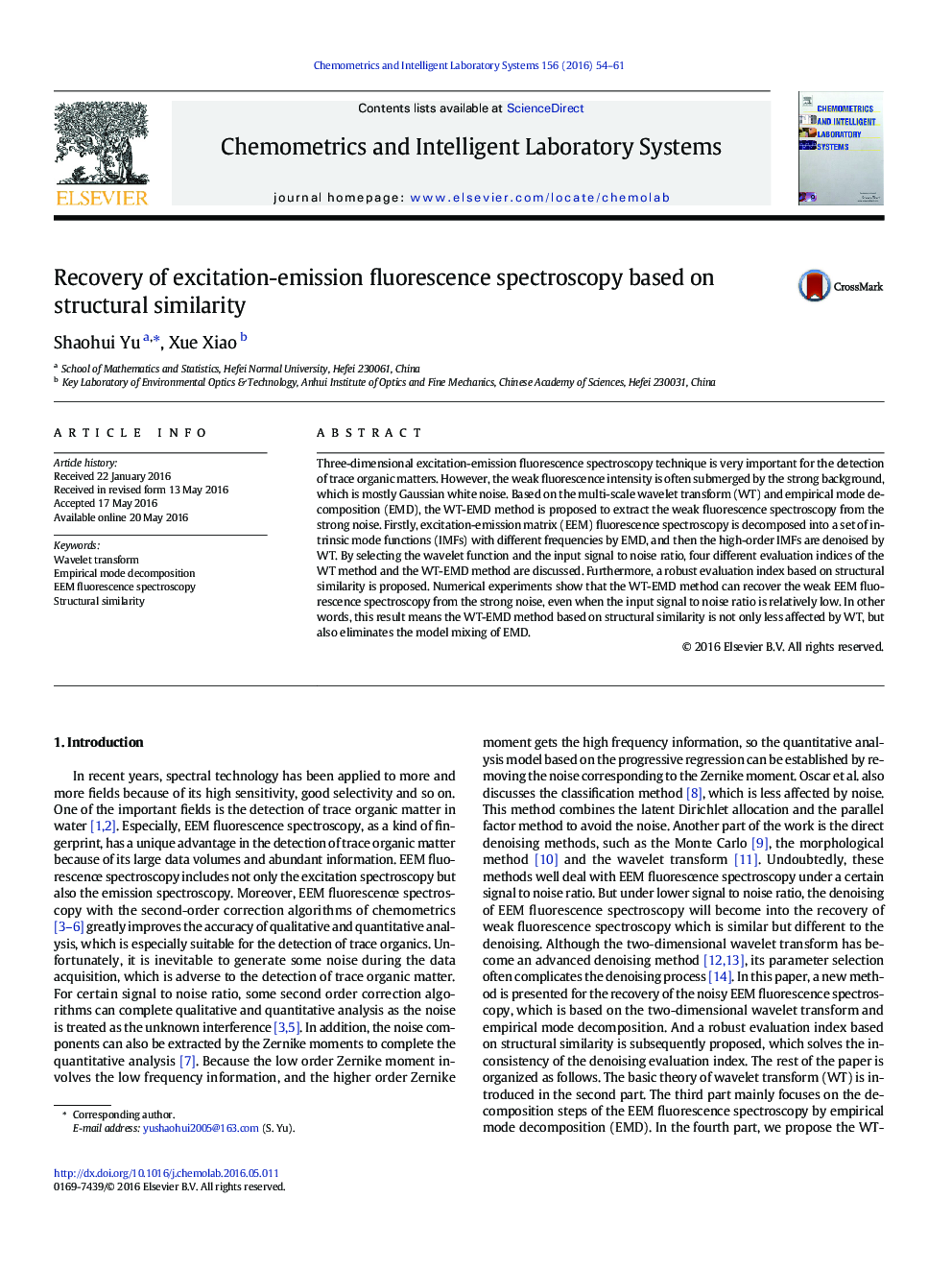| Article ID | Journal | Published Year | Pages | File Type |
|---|---|---|---|---|
| 1181237 | Chemometrics and Intelligent Laboratory Systems | 2016 | 8 Pages |
•Multi-decomposition of the high-frequency component can avoid the mode mixing in the denoising of empirical mode decomposition.•The WT-EMD method recovers the weak fluorescence spectroscopy from the strong noise.•Four different indices of the WT method and the WT-EMD method are employed to evaluate the numerical experiments.•A comprehensive evaluation of the denoising results is conducted by a robust assessment based on structural similarity.
Three-dimensional excitation-emission fluorescence spectroscopy technique is very important for the detection of trace organic matters. However, the weak fluorescence intensity is often submerged by the strong background, which is mostly Gaussian white noise. Based on the multi-scale wavelet transform (WT) and empirical mode decomposition (EMD), the WT-EMD method is proposed to extract the weak fluorescence spectroscopy from the strong noise. Firstly, excitation-emission matrix (EEM) fluorescence spectroscopy is decomposed into a set of intrinsic mode functions (IMFs) with different frequencies by EMD, and then the high-order IMFs are denoised by WT. By selecting the wavelet function and the input signal to noise ratio, four different evaluation indices of the WT method and the WT-EMD method are discussed. Furthermore, a robust evaluation index based on structural similarity is proposed. Numerical experiments show that the WT-EMD method can recover the weak EEM fluorescence spectroscopy from the strong noise, even when the input signal to noise ratio is relatively low. In other words, this result means the WT-EMD method based on structural similarity is not only less affected by WT, but also eliminates the model mixing of EMD.
